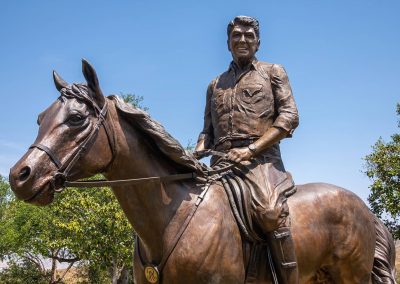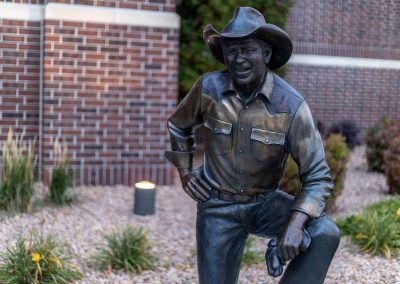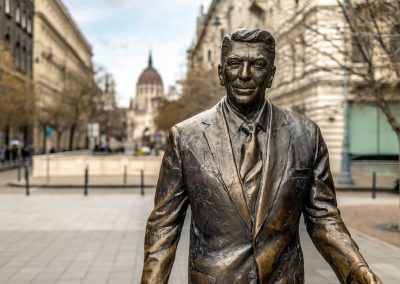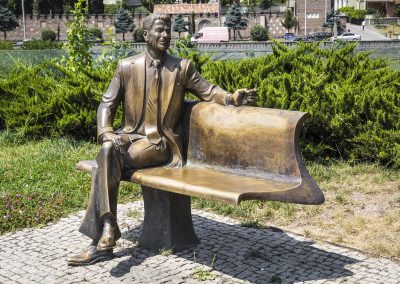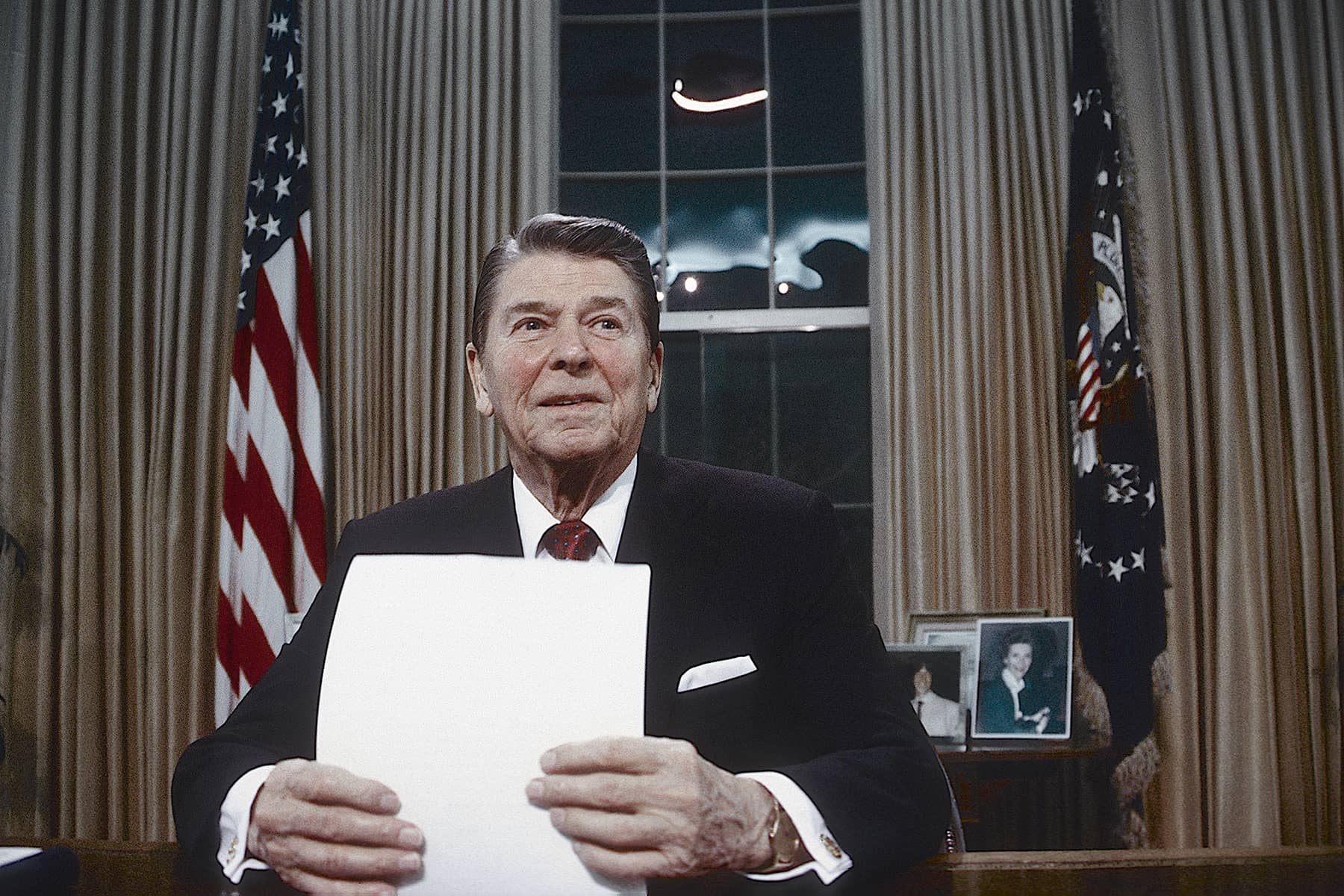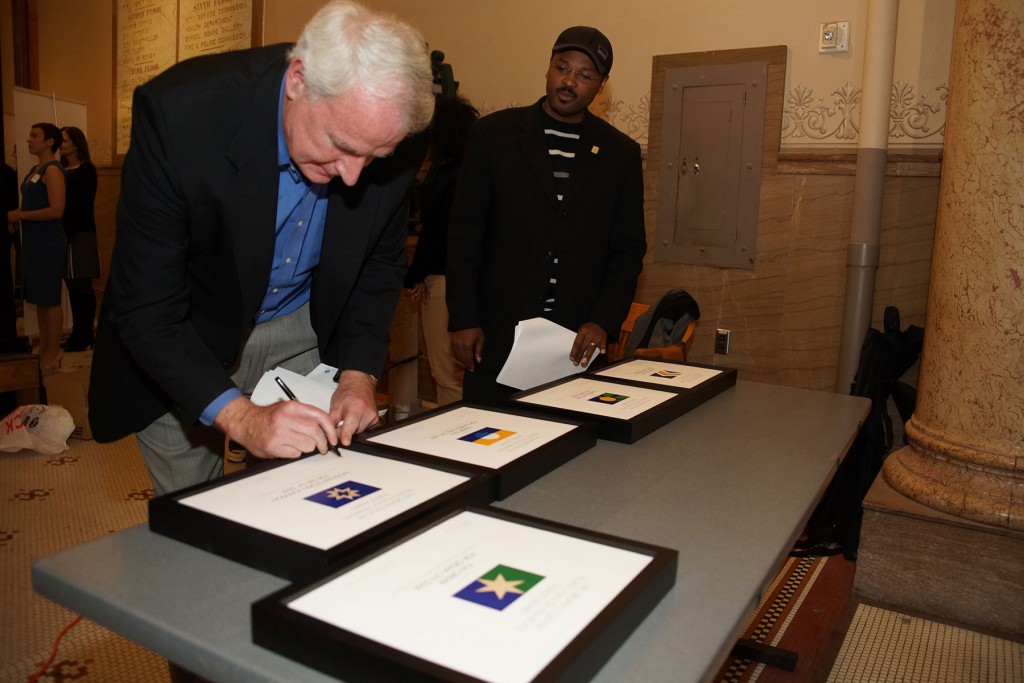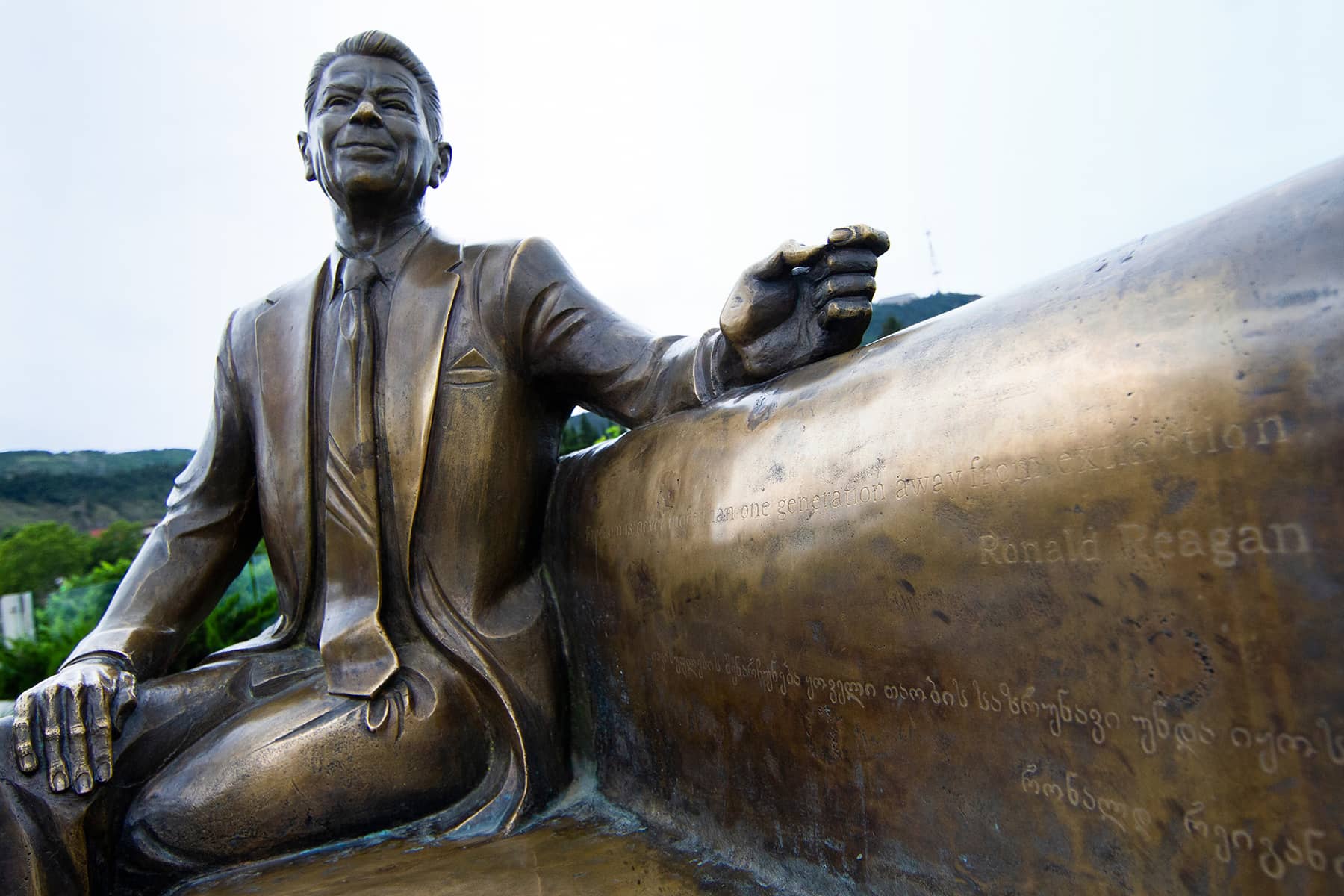
Back in 1981, when Ronald Reagan was sworn in and implicitly promised to destroy our government because it was “the problem,” many of us who strongly opposed him wondered what the final stage of Reaganism would look like. Now we know. We are there.
Violence toward women and minorities has exploded. Armed militias tried to assassinate the Vice President and Speaker of the House in an attempted coup directed by the Republican President of the United States. They tried to kidnap and murder the Democratic governor of Michigan. They’re blowing up power substations from Oregon to the Carolinas. They’ve embedded themselves in DHS, police departments, and our military. They’re coordinating with fascists overseas.
Leading up to this moment was a 41-year political war that splattered the American Dream like gut-shot blood across a dystopian Republican hellscape mural. Reaganism brought us:
- the collapse of the middle class
- student and medical debt that’s impossible to climb out of
- an explosion of predation from health insurance companies and for-profit hospitals
- political manipulation by corporations and billionaires
- an explosion of homelessness and untreated mental illness
- nd turned our elementary schools into killing fields
The question today is whether we as a nation and a people will recover from it, or if it will, as Reagan promised on January 20, 1981, end the American experiment of pluralistic liberal democracy. The seeds of Reaganism were planted in 1972 when President Nixon put tobacco lawyer Lewis Powell on the US Supreme Court.
Powell had written his infamous “Memo” a year earlier, arguing that corporate America and the morbidly rich needed to join forces to wrest back control of America after forty years of FDR’s New Deal had empowered middle class union workers, consumers, and environmentalists.
Attacking Ralph Nader for kicking off the consumer movement with his 1965 book Unsafe At Any Speed and Rachel Carson for the environmental movement with her 1962 book Silent Spring, Powell asserted that “leftists” — middle class socialists and communist sympathizers — had taken over our government, universities, the Supreme Court, and our media:
“Current examples of the impotency of business, and of the near-contempt with which businessmen’s views are held, are the stampedes by politicians to support almost any legislation related to ‘consumerism’ or to the ‘environment.’”
It was the job of big business and the very wealthy to reclaim our nation from the clutches of people concerned about the environment or the rights of average American consumers, Powell wrote:
“Business must learn the lesson, long ago learned by labor and other self-interest groups. This is the lesson that political power is necessary; that such power must be assiduously cultivated; and that when necessary, it must be used aggressively and with determination — without embarrassment and without the reluctance which has been so characteristic of American business.”
Once on the Supreme Court, Powell went to work. In 1976, he and his colleagues considered a case that would redefine the next five decades: Buckley v Valeo.
Congress passed strict regulations on political campaign fundraising and spending with the Federal Election Campaign Act of 1971. Following the Agnew and Nixon bribery scandals (that led to Vice President Agnew’s resignation to avoid prison), Congress doubled-down by strengthening that law in 1974 and creating the Federal Elections Commission (FEC).
This outraged then-Senator James Buckley, the elder brother of the late William F. Buckley and now the Senior Judge for the DC Circuit Court. Most Republicans opposed those laws and agencies but he and his side in the Senate had lost the vote, so limits on money in political campaigns became law and the FEC was created.
Like a sore loser, he sued, essentially saying that the “free speech” right of wealthy people like himself and his friends to buy off politicians was inhibited by such clean-campaign legislation.
The result, legalizing political bribery, was a first for America and the developed world. The Supreme Court ruled with and for Buckley, striking down nearly a century of campaign finance legislation going all the way back to Teddy Roosevelt’s Tillman Act.
Two years later, in the First National Bank v Bellotti case, Powell himself authored the decision that gave corporations that same legal right to bribe politicians or insert themselves into campaigns for ballot initiatives (among other things).
Prior to this, from the end of the Republican Great Depression right up until the Reagan Revolution — from 1933 to 1981 — the American middle class had a half-century of uninterrupted political and economic progress. About two-thirds of Americans were in the middle class when Reagan was elected in 1980.
Before Reagan, we’d passed the right to unionize, which built America’s first middle class. We passed unemployment insurance and workplace safety rules to protect workers. Social Security largely ended poverty among the elderly, and Medicare provided them with health security.
A top personal income tax rate between 74% and 91% throughout that period kept wages strong for working people and prevented the corrosive wealth inequality we see today. We didn’t get our first billionaire until after the Reagan revolution.
America built colleges that were free or affordable; gleaming new nonprofit hospitals; the world’s finest system of public schools; and new roads, bridges, rail, and airports from coast to coast.
We cleaned up the environment with the Environmental Protection Agency, cleaned up politics with the Federal Elections Commission, cleaned up corporate backroom deals with the Securities and Exchange Commission. We outlawed banks from gambling with our deposits via the Glass-Steagall law.
Then the Supreme Court legalized political bribery with the Buckley and Bellotti decisions (and tripled-down on them both with Citizens United in 2010).
Reagan was the first modern American president to jump through this newly opened door to giving government favors to corporations and wealthy individuals who threw their money at his political party.
He installed America’s first anti-labor Secretary of Labor, our first anti-environmentalist in charge of the EPA (Neal Gorsuch’s mother, Anne), our first anti-public-schools crusader as Secretary of Education, and our first end-times “Jesus will make all things new” fanatic in charge of selling off public lands as Secretary of the Interior.
He cut the top income tax rate on the morbidly rich from 74% to 27%, and tore the top rate for corporations from 50% down to 25%. To pay for both, he tripled the national debt.
He crushed unions, starting with one of only three that had supported his candidacy: the Professional Air Traffic Controllers (PATCO). He gutted federal support to education, kicking off what is today’s student debt crisis.
He froze the minimum wage. He cut federal benefits to the poor, pregnant women, and the mentally ill, kicking off today’s crisis of homelessness. He encouraged corporations to send our jobs overseas in an orgy of “free trade.”
As a result, money flowed into the GOP like an unending river, continuing to this moment. The result we see today, after a mere 41 years, is stark.
Republican-leaning businesses bought up radio stations from coast-to-coast and put “conservative” talk radio into every town and city in America. Wealthy people began running for political office or supporting those politicians who’d do their bidding.
Conservative donors demanded rightwing economics and political science professors in universities across America. Rightwing think tanks and publishers were funded to support them. Billionaires founded a movement to pack our courts, including the Supreme Court.
As a result, seven years ago the American middle class ceased to be half of us: it went from two-thirds of Americans when Reagan took office to 49 percent in 2015. NPR commemorated it with the headline: The Tipping Point: Most Americans No Longer Are Middle Class.
Last year, according to statistics from the US Census and the Fed, middle class households also sank below the top 1% in total wealth. Last year’s most clear-eyed headline went to Bloomberg: Top 1% of U.S. Earners Now Hold More Wealth Than All of the Middle Class.
As the GOP’s game of shilling for corporations and the morbidly rich became obvious, support for the party slipped. Needing more votes to gain and hold political office, Republicans reached out to bigots, racists, misogynists, antisemites, and open fascists. Each slice of that poison pie gave them a few percent more votes.
When working class white men realized they’d been screwed by 40 years of Reaganism, they were unsure where to focus their rage.
Republican politicians and rightwing media were happy to supply the villains: women in the workplace when they should be home barefoot and pregnant; racial minorities who “want your job” or to “rape your daughter”; and queer people who are “after your children.”
Reagan kicked off his 1980 campaign for president with a speech to an all-white audience near Philadelphia, Mississippi, where three Civil Rights activists were brutally murdered. His topic was “state’s rights.”
Bush the Elder rolled out his Willy Horton ad and George the younger lied us into two wars with Muslim nations.
Finally, like an evil Santa, Trump dumped out his bag of malice, malevolence, and odium. He embraced the world’s worst despots, seeing them as role models for a future America, while trashing our allies and disparaging democracy. He applauded police violence and ridiculed its victims.
Demagogues like DeSantis and Abbott further raised the temperature by accusing career public school teachers of promoting “Critical Race Theory” and librarians of hustling perversion and porn.
They used desperate refugees as human pawns in their vicious game. They purged millions of mostly Black, Hispanic, and young voters from the rolls, a process endorsed by five corrupt Republicans on the Supreme Court in 2018.
Our most recent Republican President of the United States is hawking NFT art and facing decades in prison in multiple state and federal venues for his crimes while in office.
Now, at the end of these forty-one short years of this unrelenting barrage of corruption and hate promoted by Republican media and politicians, we’ve arrived at the end stage of Reaganism. As a result, our nation stands upon a precipice:
Will we continue down Reagan’s path that I charted in my book The Hidden History of Neoliberalism and end up, as did Russia and Hungary, with neofascist strongman rule and a total collapse of the American experiment?
Or will we turn back to the lessons of the New Deal and Great Society, embraced by presidents and politicians of both parties for a half-century, and rebuild our middle class and our democracy, along with our trust in each other?
For most of the past 41 years the choice has not been as clear to as many people as it is today. Now that America can no long plead uncertainty, we must seize hold of the awesome responsibility for rescuing our nation and her democracy from the extraordinary damage of Reagan’s neoliberalism.
SV Production, Mark Reinstein, Claudine Van Massenhove, MyDay Content, Kirkam, and Karolis Kavolelis
© Thom Hartmann, used with permission. Originally published on The Hartmann Report as What the Final Stage of Reaganism Looks Like
Subscribe to The Hartmann Report directly and read the latest views about U.S politics and other fascinating subjects seven days a week.

